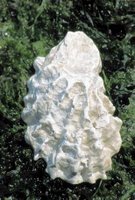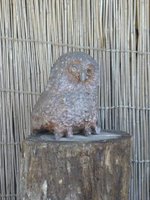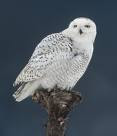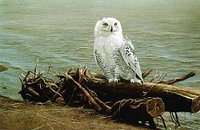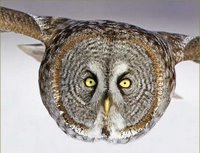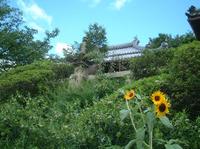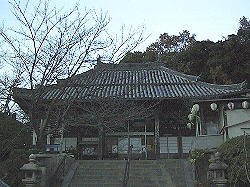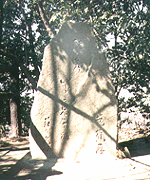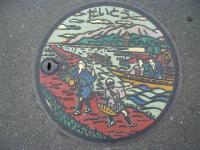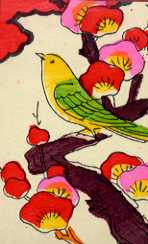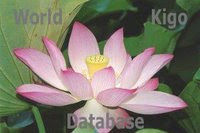. Legends about the pheasant .
:::::::::::::::::::::::::::::::::::::::::::::::::::::::::::::::::::::::::::::::::::::::::::::::::::::
Pheasant (kiji)
***** Location: Japan, other areas
***** Season: All Spring
***** Category: Animal
*****************************
Explanation
The pheasant has been introduced to Japanese literature since olden times. He is mentioned in the Kojiki 古事記 and Nihon Shoki 日本書記 and also in the Manyoo'shuu 万葉集 Poetry Almanach.
It is the national bird of Japan.
He represents a good omen, prowess and daring, since he eats poisonous snakes too. He is also said to be very dilligent and able to predict an earthquake. He is one of the companions of the fortious hero Momotaroo, the Peach Boy, on the way to defeat the demons.
He is also well loved by the gourmets, since his meat is delicious. In my part of the mountains, hunters often go to the forest before dinner and then delight in a barbeque, noodle soup or other local pheasant specialities.
The most common in Japan is maybe the Ring-necked Pheasant (Chinese Pheasant), Phasianus colchicus. He can be found all year long, but in spring his voice is most often heared, so it is a kigo for haiku.
Gabi Greve
pheasant, kiji 雉
..... kigisu, kigishi 雉子
hollering of the pheasant, kiji no hororo 雉のほろろ

"mountain bird", yamadori 山鳥
copper pheasant - Syrmaticus soemmerringi
... bigger than the pheasant. It is known for its long tail
"yamadori no o" 山鳥の尾 in many waka poems.
Voices of an animal in HAIKU
:::::::::::::::::::::::::::::::::::::::::::::::::::::::::::::::::::::::::::::::::::::::::::::::::::::
There are about 50 species of Pheasants.
Practically all of them are native to Central Asia, Ukraine, and China. They have been introduced and widely established in various areas. Romans brought Pheasants into Europe. According to mythology Argonauts took them from the river Phasis in Colchis. Egyptian Pharaohs kept Pheasants; Alexander the Great brought them to Greece from Asia.
Some species first came into North America and then to Europe. At present Pheasants are found in a variety of habitats from the snowy Himalayas to the jungles of Indonesia.
Pheasant is the state bird of South Dakota.
http://www.pheasant-birds.com/
*****************************
Worldwide use
Europa
In Europe, pheasant hunting is only for the Royals. The pheasants are driven to the hunters. "Common Folks" walk the fields and flush the birds so that they fly over the "Royals" shooting stations.
http://pheasantridgepreserve.com/hunts.shtml
:::::::::::::::::::::::::::::::::::::::::::::::::::::::::::::::::::::::::::::::::::::::::::::::::::::
Germany
Fasan
:::::::::::::::::::::::::::::::::::::::::::::::::::::::::::::::::::::::::::::::::::::::::::::::::::::
North America
A kiji is a pheasant, the Asian ones come in a variety of colors and sizes, some with magnificent long tails, though no where near the peacock in size. When I was a zookeeper, Asian pheasants were also in my care. They were not particularly noisy at the zoo, but they did make noise.
There are no North American native pheasant species. The ring-necked pheasant which many regard as an 'American pheasant' was introduced from Asia in the 1800s.
http://hoglezoo.org/animals/printable.php?id=133
M. Kei
Editor of the Chesapeake Bay Saijiki
*****************************
Things found on the way
. Kiji-guruma きじ車 pheasant on wheels
Pheasant toys from Kyushu
:::::::::::::::::::::::::::::::::::::::::::::::::::::::::::::::::::::::::::::::::::::::::::::::::::::
Proverb
yakeno no kigisu yoru no tsuru 焼け野の雉子 夜の鶴
pheasant in a burning field, crane in the evening
a mother's heart is always with her children.
Legend knows that a pheasant mother will run back and save her chicks if she discovers the fields around her nest are burning.
*****************************
HAIKU
父母のしきりに恋し雉の声
父母の しきりに戀し 雉子の声
父母のしきりに戀し雉の聲
(ちちははの しきりにこいし きじのこえ)
chichi haha no shikiri ni koishi kiji no koe
Father, mother dear!
I hear as I mourn for you –
hear the pheasant's cry!
The voice of the pheasant;
how I longed
for my dead parents!
Tr. Blyth
Written in 1688, Basho age 45
at Mount Koyasan 高野山. He had been to Iga Ueno to celebrate the important 33th death anniversary of his father.
This is a reference waka by Gyoki Bosatsu 行基菩薩
山鳥のほろほろと鳴く声聞けば父かとぞ思ふ母かとぞ思ふ
yamadori no horohoro to koe kikoeba
chichi zo omou haha ka to zo omou
Listening
to the cry of a pheasant
I wonder:
Could it be my father?
Could it be my mother?
source : Makoto Ueda
Oi no Kobumi 笈の小文
. Matsuo Basho 松尾芭蕉 - Archives of the WKD .
. Gyoki Bosatsu (Gyooki Bosatsu) 行基菩薩 .
蛇食ふと聞けばおそろし雉子の声
hebi kuu to kikeba osoroshi kiji no koe
when it eats a snake
the dreadful voice
of a pheasant
Written in 1690 元禄3年.
osoroshi 恐ろしい dreadful, terrible
. Matsuo Basho 松尾芭蕉 - Archives of the WKD .
:::::::::::::::::::::::::::::::::::::::::::::::::::::::::::::::::::::::::::::::::::::::::::::::::::::
丘の雉鷺の身持をうらやむか
oka no kiji sagi no mimochi o urayamu ka
hilltop pheasant
are you jealous of the heron's
style?
焼飯は烏とるとやきじの鳴
akimeshi wa karasu toru to ya kiji no naku
"the raven took
all the fried rice!"
announces the pheasant
Issa has about 70 haiku about the pheasant.
Check out the Database of David Lanoue !
. Kobayashi Issa 小林一茶 in Edo .
More about the Pheasant in Japanese Literature.
:::::::::::::::::::::::::::::::::::::::::::::::::::::::::::::::::::::::::::::::::::::::::::::::::::::
- - - - - Yosa Buson - - - - -
山鳥の枝踏かゆる夜長哉
yamadori no eda fumi-kayuru yonaga kana
(1769)
A mountain bird
Shifting on a branch from foot to foot--
A long night.
Tr. Nelson/Saito
A mountain pheasant
moves his feet on the branch--
the long night!
Tr. Sawa/ Shiffert
山鳥の尾をふむ春の入日哉
yamadori no o o fumu haru no irihi kana
(1783)
The setting spring sun
has been treading on the tail
of the copper pheasant.
Tr. Blyth
stepping on
a copper pheasant's tail -
spring sunset
Tr. Haldane
A mountain pheasant,
treading on its tail,
the springtime's setting sun.
Tr. Henderson
兀山や何にかくれてきじのこゑ
hageyama ya nani ni kakurete kiji no koe
these barren hills -
where is it hidden
the call of a pheasant
Tr. Gabi Greve
hi kururu ni kiji utsu haru no yamabe kana
At sunset
The sound of pheasant shooting
Near the spring mountainside.
Tr. Miura
きじ鳴や坂を下リのたびやどり
kiji naku ya saka o kudari no tabi yadori
a pheasant calls -
I walk downhill
looking for a lodging
Tr. Gabi Greve
kiji uchite kaeru ieji no hi wa takashi
kiji utte kaeru ieji no hi wa takashi
With a shot pheasant,
going back home on the path,
the sun still high.
Tr. Sawa/ Shiffert
遅キ日や雉子の下りゐる橋の上
osoki hi ya kiji no ori-iru hashi no ue
Daylight longer!
a pheasant has fluttered down
onto the bridge.
Tr.Sawa/ Shiffert
亀山へ通ふ大工やきじの聲
. kameyama e kayou daiku ya kiji no koe .
Kameyama in Kyoto
木瓜の陰に皃類ひ住ムきゞす哉
boke no kage ni kao tagui sumu kigisu kana
A face shaped similar
to a flowering quince, the pheasant
that dwells here!!
Buson has made the astute observation that the face of a pheasant is similar to flowers that the quince blooms.
Masaoka Shiki mentioned this haiku as one of the better 'pictorial' haiku that Buson wrote. It is easy to understand the visual aspect of this haiku, but I think that it is important to consider that to write this 'picture' out, Buson used to a simile to do it. And the word 'sumu' (dwells) really is padding that adds nothing to the visual effect of the haiku. The use of the old character 㒵 (kao - face) does add to the visual effectiveness of the haiku because it physically inserts the face of pheasant and the quince flowers into the words.
This count 18. Since Buson could have used the shorter word 'kiji' for pheasant, instead of the older word 'kigisu', you have to wonder what linguistic considerations went into making this count one over.
- source : James Karkoski on facebook -
柴刈に砦を出るや雉の聲
きじ啼や草の武藏の八平氏 - hachi heiji - The Hachi Clan
木瓜の陰に皃類ひ住ムきゞす哉
むくと起て雉追ふ犬や宝でら
. Yosa Buson 与謝蕪村 in Edo .
:::::::::::::::::::::::::::::::::::::::::::::::::::::::::::::::::::::::::::::::::::::::::::::::::::::
the pheasant flies but
beauty's feathered sheen still shines
in the seer's eye
Kalamu ya Salaam
This example is a haiku which leans heavily on the use of the long "ssss" sound and on its complement, the long "ffff" sound, both of which contrast with the short and abrupt "but" and "eye." Notice, even though "but" and "eye" fall at end points, the rhyme is set up with the half rhyme of "flies" and "eye." If you recite it alould you will immediately hear the connections.
My experimentation has been to go beyond what the poem means and also dig deeply into how the poem sounds. Most haiku do not focus on the sounding element precisely because most haiku don't use a Black aesthetic.
Read this interesting article (L)
http://www.nathanielturner.com/onwritinghaiku.htm
:::::::::::::::::::::::::::::::::::::::::::::::::::::::::::::::::::::::::::::::::::::::::::::::::::::
early morning -
a pheasant hollers
right above me
Gabi Greve, December 2008
*****************************
Related words
***** Peacock, kujaku 孔雀
:::::::::::::::::::::::::::::::::::::::::::::::::::::::::::::::::::::::::::::::::::::::::::::::::::::
. Legends about the pheasant .
. pheasant predicting an earthquake .
:::::::::::::::::::::::::::::::::::::::::::::::::::::::::::::::::::::::::::::::::::::::::::::::::::::
Pheasant as Food
WASHOKU ... Japanese Food SAIJIKI
[ . BACK to WORLDKIGO . TOP . ]
[ . BACK to DARUMA MUSEUM TOP . ]
:::::::::::::::::::::::::::::::::::::::::::::::::::::::::::::::::::::::::::::::::::::::::::::::::::::
